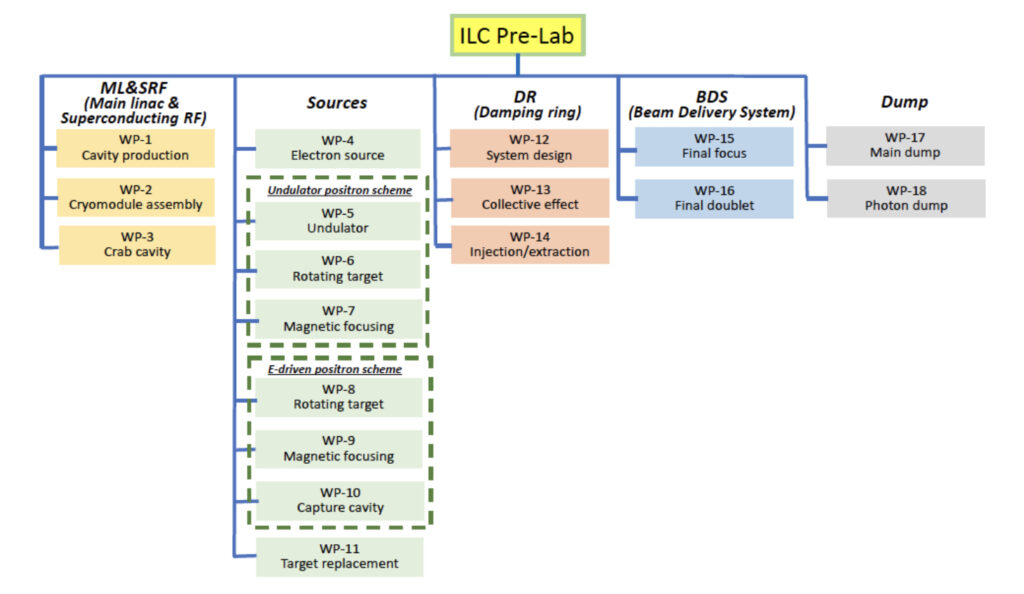Almost one and half year has passed since the International Committee for Future Accelerators (ICFA) formed the ILC International development Team (IDT) with the aim to prepare the ILC Preparatory Laboratory (Pre-lab). The completion of the Pre-lab proposal on 1 June was the biggest achievement of the IDT in 2021. It was nice to see that the work for the Pre-lab proposal generated revived activities and stimulated new interest for the ILC.
It was truly a worldwide effort, but due to the COVID restrictions, entirely done remotely: everything was online work,. not only the document writing but also all the meetings from the technical ones by the Accelerator Working Groups to the planning and editorial discussion by the Executive Board. There were advantages and disadvantages: for example, since people travelled less, it was easier to arrange remote meetings, but time differences among the participants rather limited the duration of these meetings. It should be also noted that we profited from the knowledge accumulated by the Global Design Effort for the Technical Design Report and from their worldwide network.

The purpose of the Pre-lab is to advance the current technical description of the ILC accelerator and site design to the engineering level to be ready for the start of the construction. This will provide a reliable cost estimate and feasibility assessment of the project that are essential for the intergovernmental discussions on the share of the cost and responsibilities. Therefore, the Pre-lab must start now as stressed in the proposal. At the moment, however, the Japanese government maintains its position that some clarity in the international cost sharing would be needed for expressing their interest in hosting the ILC as well as for declaring their support for the Pre-lab.
Since the completion of the Pre-lab proposal, the IDT, in particular the Executive Board, has been trying to implement the proposal. The proposal notes: “Elaboration, modification and adjustment should be introduced for its implementation, in order to incorporate requirements arising from the physics community, laboratories, and governments”. This is exactly what we are doing now, faced with the situation described above. Japanese colleagues are working hard to move their government to a positive direction, and we are discussing with different laboratories how to help their effort.
Recalling that the ICFA mandate indicates to complete the IDT work by the end of 2021, ICFA needs to assess the situation of the ILC and IDT work in the coming meeting in March to decide how to proceed. In their discussion, the current development in Japan, meaning the new community organisation for the ILC, activities by the Federation of the Diet Members and the anticipated review result from the MEXT Advisory Panel for the ILC, will be very important. An equally important issue in their discussion will be whether a linear collider should remain as a viable option for the Higgs factory. While there exists a community consensus that an e+e- Higgs factory should be the next high energy physics project, no conclusion has been reached which one. Although there already exists intensive regional efforts for different options, now might be the time for ICFA to discuss a global strategy for the realisation of the Higgs factory. Further effort to advance the ILC accelerator development from the current technical design to the engineering design phase should be judged in this context.
In the coming months, we will explore and develop ideas for the Pre-lab implementation to provide information necessary for the ICFA discussion. The support and positive opinion of the community are of course essential in this effort and we are counting on them.


Recent Comments